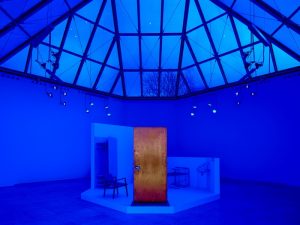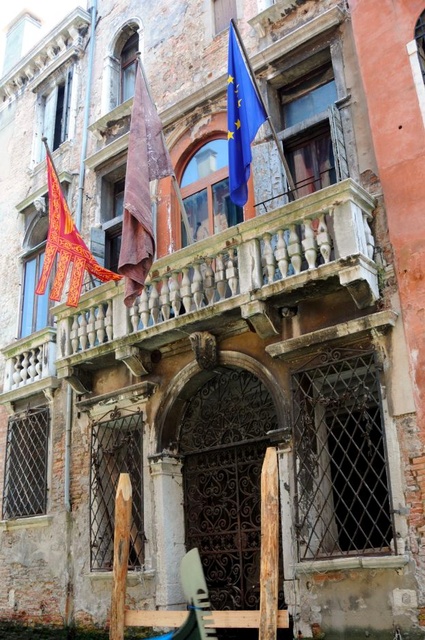 Bandera (Flag) (2009), Fabric dyed with blood collected from executions on the north border of Mexico
Bandera (Flag) (2009), Fabric dyed with blood collected from executions on the north border of Mexico
I avoid writing about artworks and exhibitions i haven’t actually seen but there must be exceptions to the rule. Especially if the exception is ¿De qué otra cosa podríamos hablar? (What Else Could We Talk About?), Teresa Margolles’ solo show at the Mexican Pavilion for the Venice Biennale. I read about it the day after my return from Venice. Not only did i miss it but apparently i passed by it twice.
I discovered the work of Margolles last year in the exhibition Emotional Systems at the Strozzina, Florence. Her installation filled an empty room with air humidified using the water that had previously been used to wash the corpses of people found dead in the street and brought to public mortuaries in Mexico City. For the Biennale, the artist left the morgue where she had located her studio to explore the urban territory, in search of material traces and residues of the street crimes.
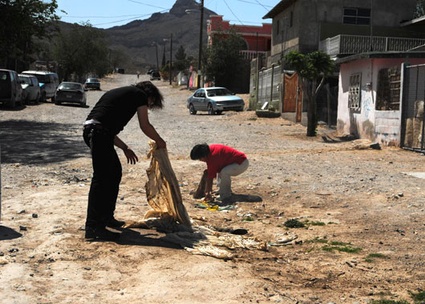
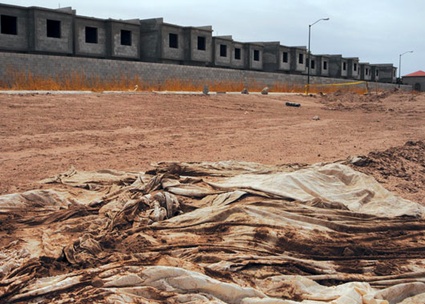
The Mexican press reports that in 2008, over 5.000 people were killed due to violent clashes and executions among criminal gangs, and in operations of the security forces in the country. Approximately 2.800 died in similar circumstances in 2007.
Margolles and her assistants went to the scenes of the executions and soaked pieces of cloth with the mud or blood they found there, they collected fragments of windshield glass after a shooting, they also copied narcomensajes -the messages left by drug lords over the corpses of beheaded victims.
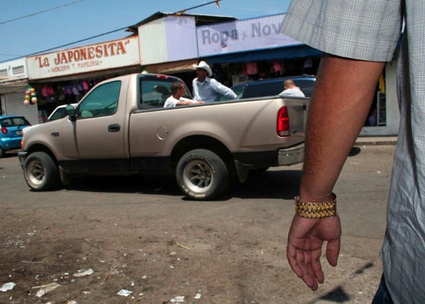 Teresa Margolles, Jewels, 2009. Jewels made with gold and fragments of windshields collected at murder sites in Mexico. Documentation of the Jewels in Culiacan city, Mexico, Spring 2009
Teresa Margolles, Jewels, 2009. Jewels made with gold and fragments of windshields collected at murder sites in Mexico. Documentation of the Jewels in Culiacan city, Mexico, Spring 2009
The artist transferred the substances of so much sufferings, violence and social waste into the Palazzo Rota-Ivancich, a Sixteenth Century Venetian Palace located near Piazza San Marco. Just like the exhibition in Florence, the show requires you to pay extra attention. At first, all you see is jewellery, embroidery, wet pieces of fabrics drying on the wall and maybe you’ll arrive when someone is cleaning the floor of the exhibition room. You might even pass by one of the flags that hang over the canal and ignore it.
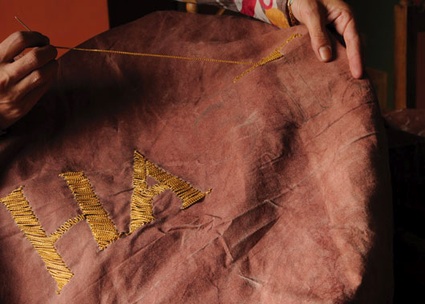
The jewels, however, were made with fragments of windshield glass (Ajuste de Cuentas). The gold embroidery on fabric are copies of narcomensajes – “Hasta que caigan todos tus hijos” (“Until all your sons have fallen”), “Así terminan las ratas” (“This is the way rats end”). The flag is dyed with the blood found on the site of shootings and decapitations (Bandera.) And then of course there’s that disturbing smell…
Every afternoon, someone cleans the marble floors of the Palazzo with a mop dipped in water mixed with the blood found on the site of murders committed during the drug wars in Northern Mexico. How long will traces of it remain on the sole of your shoes?
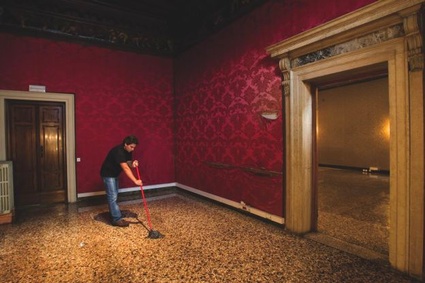 Image woki-toki
Image woki-toki
In a time where borders are no more able to contain the plague, when politics are mobilized by the ideological uses of fear, and where global capital is accompanied by a whole epidemic of violence, What else could we talk about? would want to suggest the need to politicize discontent and disgust, rather than falling prey of the strategies of a new world order erected over the ruins of the perpetual wars and infinite crusades of the powers to be, concludes curator Cuauhtémoc Medina in her statement.
The works presented at the Mexican Pavilion make tangible to a foreign audience the vicious circle of prohibition, addiction, accumulation, poverty, hatred and repression that transmogrifies the transgresive pleasures and puritan obsessions of the North into the South as Hell.
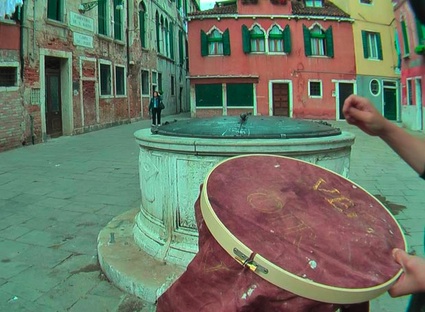 A performer uses golden thread to embroider a narcomensaje on a bloodstained fabric in Venice (photo)
A performer uses golden thread to embroider a narcomensaje on a bloodstained fabric in Venice (photo)
Related: Emotional Systems, at the Strozzina in Florence.
You might also be interested in the following articles: México, ¿una sociedad decapitada?, Réplica21‘s review of the pavilion and The war we gave Mexico.



